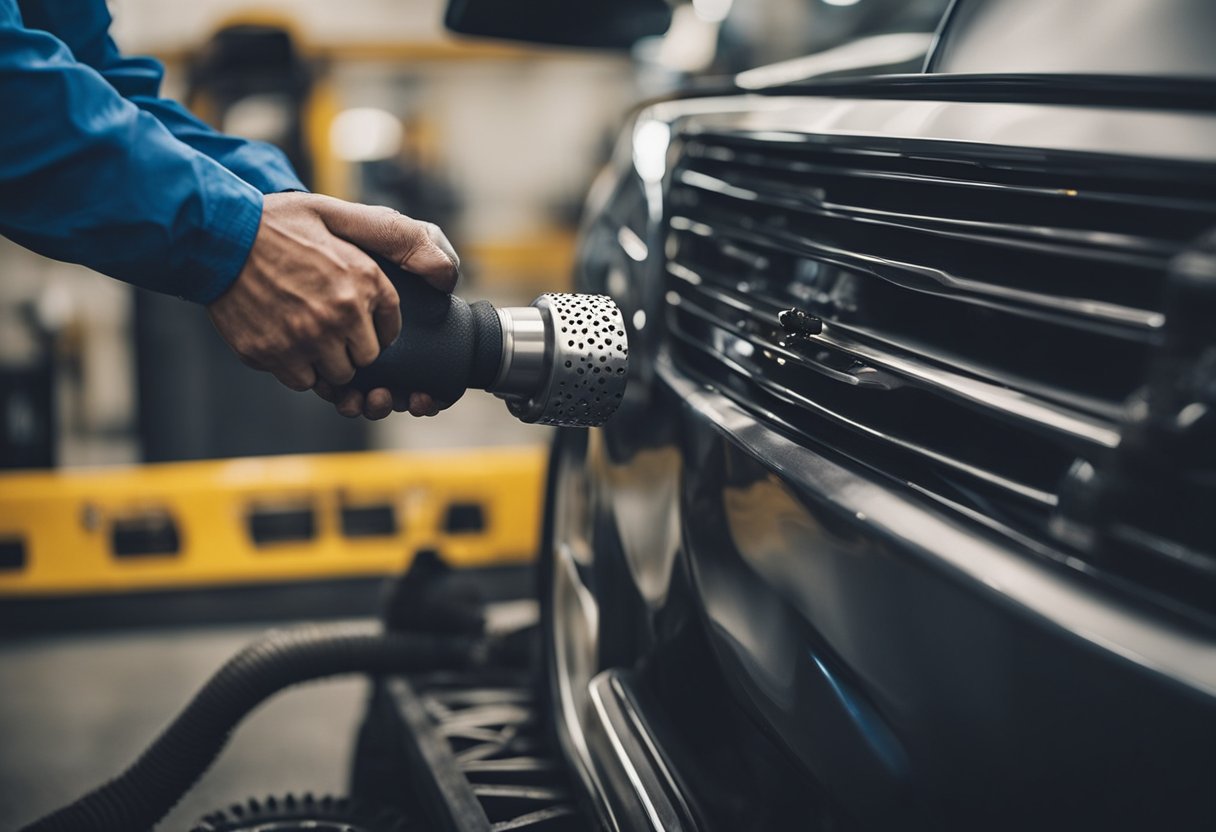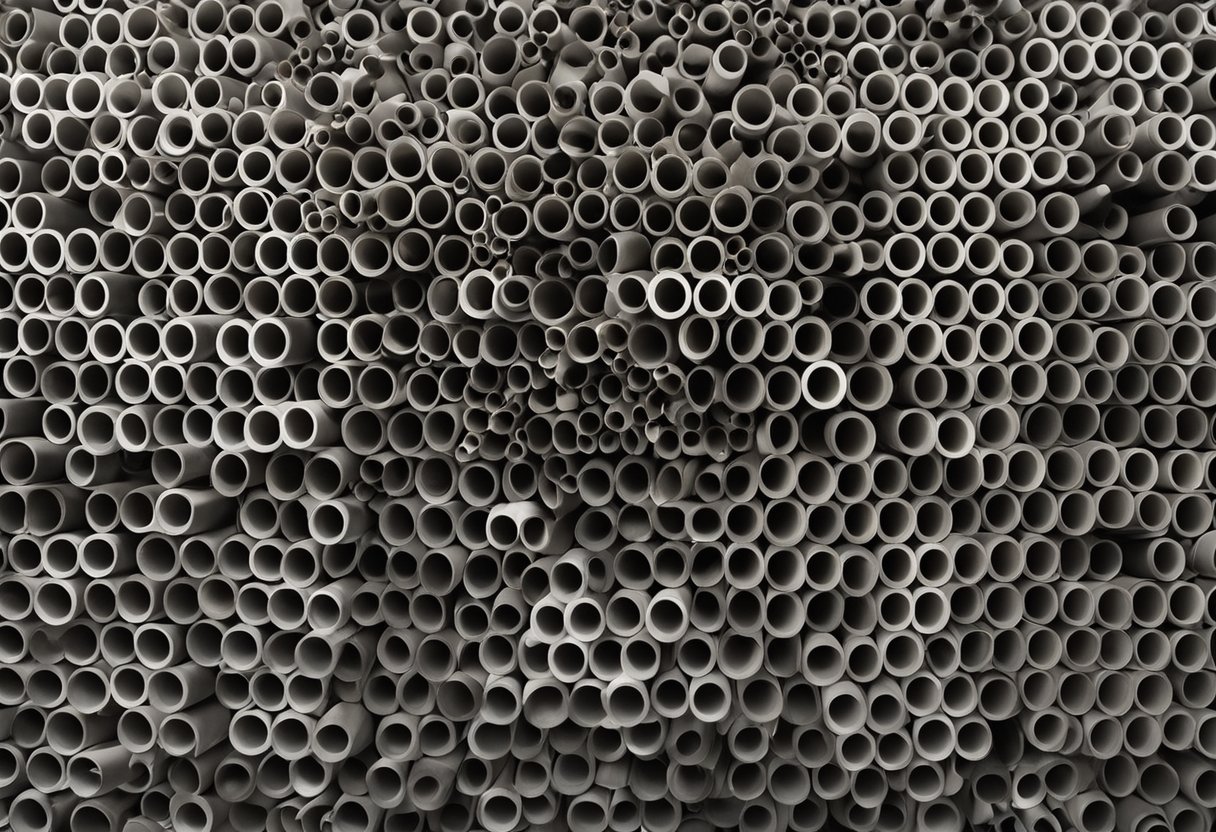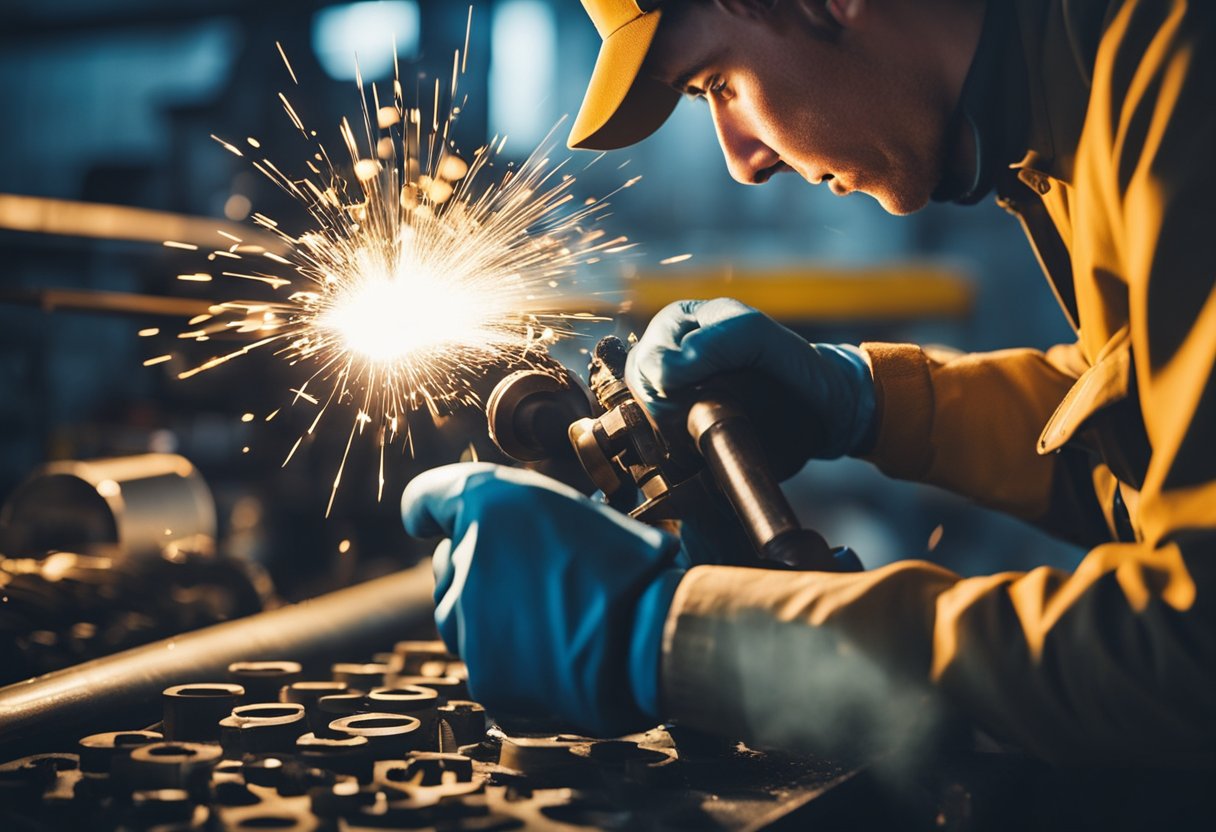Drilling holes in mufflers is a popular modification for car enthusiasts who want to achieve a louder and more aggressive sound from their vehicles. But before you start drilling holes in your muffler, it’s important to understand the function of mufflers and the potential impact of this modification on your vehicle’s performance and safety.

Mufflers are designed to reduce the noise produced by the exhaust system and to improve the efficiency of the engine by reducing back pressure. When exhaust gases pass through the muffler, they enter a series of chambers that cancel out certain sound waves and reduce the overall noise level. However, drilling holes in the muffler can disrupt this process and allow more exhaust gases to escape, resulting in a louder sound and potentially increased power. However, this modification can also lead to reduced back pressure and decreased fuel economy, as well as potential legal and environmental concerns.
Key Takeaways
- Drilling holes in mufflers can result in a louder and more aggressive sound from your vehicle, but it can also have negative impacts on performance and fuel economy.
- Before modifying your exhaust system, it’s important to research the potential legal and environmental concerns and to take safety precautions such as wearing safety goggles and using jack stands.
- Alternatives to drilling holes in mufflers include installing a resonator exhaust tip, replacing the muffler with a louder one, or modifying the exhaust system with headers or a cold air intake.
Understanding Mufflers and Their Function
As an automotive enthusiast, I know that mufflers are an essential component of a vehicle’s exhaust system. Mufflers are designed to reduce the noise produced by the engine during the combustion process. They work by creating a series of chambers and baffles that the exhaust gases must pass through before exiting the vehicle.
One of the primary functions of a muffler is to reduce the amount of noise produced by the engine. The exhaust gases produced during the combustion process are extremely loud and can cause hearing damage if not adequately dampened. Mufflers reduce the noise level by creating a series of chambers and baffles that the exhaust gases must pass through before exiting the vehicle.
Another essential function of mufflers is to improve the exhaust flow and reduce back pressure. Back pressure occurs when the exhaust gases are unable to exit the engine quickly enough, causing them to build up and reduce engine performance. Mufflers are designed to create a smooth and consistent exhaust flow, reducing back pressure and improving engine performance.
Mufflers work by utilizing a series of chambers and baffles to reduce the noise produced by the engine and improve exhaust flow. The exhaust gases enter the muffler and are forced to pass through a series of chambers and baffles before exiting the vehicle. The chambers and baffles are designed to reduce the noise level while still allowing the exhaust gases to exit the vehicle efficiently.
In summary, mufflers are an essential component of a vehicle’s exhaust system. They are designed to reduce the noise produced by the engine during the combustion process and improve exhaust flow by reducing back pressure. Mufflers work by utilizing a series of chambers and baffles to reduce the noise level while still allowing the exhaust gases to exit the vehicle efficiently.
The Concept of Drilling Holes in Mufflers
As a car enthusiast, I have come across different ways to modify a car’s exhaust system to produce a louder and more aggressive sound. One of the popular methods is drilling holes in the muffler.
The concept of drilling holes in mufflers involves creating additional paths for exhaust gases to escape from the muffler. By doing so, the exhaust flow increases, and the sound produced by the car’s exhaust system becomes louder and more aggressive.
To drill holes in the muffler, you will need a drill bit capable of drilling through metal. A 3/8-inch drill bit is recommended for this purpose. It is essential to drill the holes in the optimal location to ensure a louder sound.
It is important to note that drilling holes in the muffler may affect the performance of the car’s engine. The muffler’s primary function is to reduce the noise produced by the engine and improve the car’s performance by increasing horsepower and torque. Therefore, drilling holes in the muffler may reduce the muffler’s effectiveness in reducing noise and may also reduce the engine’s performance.
In conclusion, drilling holes in mufflers is a popular method of modifying a car’s exhaust system to produce a louder and more aggressive sound. However, it is important to consider the potential impact on the car’s performance and noise reduction before drilling holes in the muffler.
Potential Impact on Vehicle Performance

Drilling holes in the muffler can have a significant impact on the performance of a vehicle. It is essential to understand the potential consequences before making any modifications to the exhaust system.
Engine Performance
The engine performance can be affected by drilling holes in the muffler. Altering the backpressure can lead to a lean air-fuel mixture, which can cause increased heat in the exhaust system, potential damage to the valves, and even engine misfires or other performance issues. It is important to note that drilling holes in the muffler can also affect the engine’s power and performance.
Exhaust System
Drilling holes in the muffler can cause damage to the exhaust system. The exhaust gasses will escape before being thoroughly dampened by the muffler, which can lead to increased noise and reduced fuel economy. Additionally, drilling holes in the muffler can affect the back pressure, exhaust flow, and combustion chamber. These factors can impact the overall performance of the exhaust system.
Turbocharger and Headers
Drilling holes in the muffler can also affect the performance of the turbocharger and headers. The turbocharger relies on exhaust gasses to spin the turbine and increase the engine’s power. Drilling holes in the muffler can affect the exhaust flow, which can impact the performance of the turbocharger. Headers are designed to improve the exhaust flow and increase the engine’s power. Drilling holes in the muffler can affect the performance of headers, which can ultimately impact the engine’s power and performance.
Cold Air Intake
A cold air intake is designed to increase the amount of cool air that enters the engine. Drilling holes in the muffler can affect the performance of the cold air intake. The exhaust gasses will escape before being thoroughly dampened by the muffler, which can lead to increased heat in the engine compartment. This can impact the performance of the cold air intake, which can ultimately impact the engine’s power and performance.
In conclusion, drilling holes in the muffler can have a significant impact on the performance of a vehicle. It is important to understand the potential consequences before making any modifications to the exhaust system. It is recommended to consult with a professional mechanic before making any modifications to the exhaust system.
Safety Measures and Precautions

As with any DIY project, safety should always be a top priority when drilling holes in a muffler. Here are some safety measures and precautions to follow:
-
Wear Safety Goggles: When drilling into metal, it is crucial to protect your eyes from metal shavings and debris. Wear safety goggles to prevent eye injuries.
-
Use Jack and Jack Stands: Before you start drilling holes, make sure your vehicle is securely lifted on a jack and supported by jack stands. This will prevent the car from falling and ensure safety while working underneath.
-
Apply Penetrating Oil: If the muffler is rusty, applying penetrating oil to the bolts and clamps before drilling can make the process easier and safer. The oil helps to loosen the rust and corrosion, making it easier to remove the bolts and clamps.
-
Use a Lubricant: When drilling holes, using a lubricant can help reduce friction and heat buildup. This can prevent the drill bit from getting too hot and breaking, and it can also make the process smoother and more efficient.
-
Wear Protective Clothing: Wear long sleeves, pants, and gloves to protect your skin from metal shavings and debris. This will help prevent cuts and scrapes.
-
Apply Rust-Resistant Paint: After drilling holes, apply a rust-resistant paint to the muffler to prevent corrosion. This will help prolong the life of the muffler and prevent the need for future repairs.
By following these safety measures and precautions, you can ensure a safe and successful project when drilling holes in a muffler.
Possible Legal and Environmental Concerns

When considering drilling holes in your muffler, it is important to be aware of the legal and environmental concerns that may arise. In most states, it is illegal to drill holes in your muffler. The reason for this is that the exhaust from your car needs to be properly vented in order to reduce noise pollution. When you drill holes in your muffler, it can cause the exhaust to be louder than it should be, which can result in a ticket or fine if you are pulled over by the police. Moreover, drilling holes in your muffler can cause an exhaust leak, which can release toxic gases into the atmosphere and cause harm to both you and the environment.
Another concern is the emissions test. The way that an exhaust is set up is designed to comply with federal regulations, and drilling holes in your muffler can cause your car to fail an emissions test. This can result in a check engine light, which can be costly to repair. Furthermore, if your car has a catalytic converter or O2 sensor, drilling holes in your muffler can cause damage to these components, which can also be expensive to replace.
In summary, drilling holes in your muffler can have serious legal and environmental consequences. It is important to consider the potential risks before making any modifications to your exhaust system.
Alternatives to Drilling Holes in Mufflers

As an expert in the automotive industry, I know that drilling holes in mufflers is not the only way to modify exhaust systems. In fact, there are several alternatives to consider before resorting to drilling holes in mufflers.
One alternative is a muffler delete. A muffler delete involves removing the muffler entirely from the exhaust system. This modification can increase the sound of the exhaust, but it can also cause the vehicle to fail emissions tests and may result in a loss of low-end torque.
Another option is to modify the exhaust by replacing the muffler with a high-performance aftermarket muffler. This can improve the sound of the exhaust while also increasing horsepower and torque. However, this modification can be expensive and may require professional installation.
A resonator exhaust tip is another alternative to drilling holes in mufflers. This modification involves adding a resonator exhaust tip to the end of the exhaust pipe. The resonator exhaust tip can help to reduce the noise level of the exhaust while still improving the overall sound.
Finally, a new muffler can also be installed to modify the exhaust system. A new muffler can improve the sound of the exhaust while also increasing horsepower and torque. However, like the high-performance aftermarket muffler, this modification can be expensive and may require professional installation.
In conclusion, there are several alternatives to drilling holes in mufflers that can be considered when modifying an exhaust system. From a muffler delete to a new muffler, each alternative has its own advantages and disadvantages. It is important to consider all options and choose the one that best fits your needs and budget.
Conclusion

In conclusion, drilling holes in a muffler can be a tempting solution for those looking to modify the exhaust system and achieve a louder car sound. However, it is important to consider the legal implications of such modifications, as well as the potential negative effects on engine performance and efficiency.
Before starting to drill holes in the muffler, it is wise to do some research and understand the risks involved. It is also important to ensure that the muffler is in good condition and not in need of repair, as drilling holes in a damaged muffler can lead to fire hazards and other safety issues.
If you do decide to modify the exhaust system by drilling holes in the muffler, it is important to keep in mind that it may result in increased noise pollution and may trigger the check engine light. Additionally, it may be necessary to install a new muffler to achieve the desired sound without compromising engine performance and efficiency.
Overall, while drilling holes in a muffler may seem like a quick and easy solution for achieving a louder car sound, it is important to approach this modification with caution and carefully consider all of the potential risks and drawbacks.
Frequently Asked Questions
Does drilling holes in a muffler increase its volume?
Yes, drilling holes in a muffler can increase its volume. When you drill holes in a muffler, you create a path for the exhaust gases to escape more easily. This can result in a louder exhaust note. However, the increase in volume may not be significant, and it may not be noticeable to everyone.
Can drilling holes in a muffler cause damage?
Drilling holes in a muffler can cause damage if not done correctly. If you drill too many holes or drill them in the wrong place, you can weaken the structure of the muffler. This can lead to cracks, leaks, and other problems. Additionally, drilling holes in a muffler can void the manufacturer’s warranty.
How many holes should be drilled in a muffler?
The number of holes you should drill in a muffler depends on the type of muffler and the sound you want to achieve. In general, it is recommended to start with a small number of holes and gradually increase the number until you achieve the desired sound. However, drilling too many holes can damage the muffler, so it’s important to be careful.
What are the effects of drilling holes in a resonator?
Drilling holes in a resonator can have a similar effect to drilling holes in a muffler. It can increase the volume of the exhaust note and change the sound. However, drilling holes in a resonator can also change the frequency of the sound and may result in a different tone or pitch.
Is it safe to drive with a hole in a muffler?
Driving with a hole in a muffler is not recommended. A hole in a muffler can cause increased noise levels, reduced performance, and can allow exhaust gases to enter the cabin. Additionally, a damaged muffler can lead to a failed emissions test and can result in a fine or other penalty.
Will drilling a weep hole in a muffler help?
Drilling a weep hole in a muffler can help to prevent moisture buildup and rust. However, it will not change the sound of the exhaust. A weep hole is a small hole that allows moisture to escape from the muffler. It is typically located at the lowest point of the muffler and is drilled in a way that allows water to drain out but does not affect the performance of the muffler.

Hi, I’m Sal Muller of Tooltrip.com. My DIY experience led me to understand essential power tools for home projects. Tooltrip.com guides enthusiasts and professionals in choosing right tools for any job. I provide concise top tool reviews for easier, efficient DIY.

